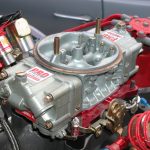The cylinder block is one central component of the engine in an automobile. The engine block structure contains the cylinders and other engine parts of an internal combustion engine. It is also called an Engine Block.
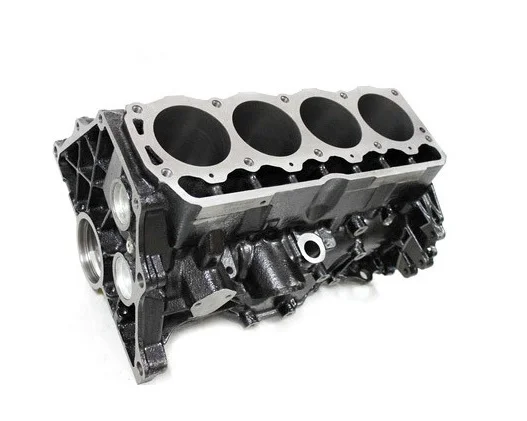
The cylinders, cylinder head, and crankcase are the major three parts that form the foundation of an automobile engine.
The cylinder includes the piston, piston ring, and piston pin which is used to perform the combustion process. It also includes elements such as the coolant passages and oil galleries which provides circulation and temperature control caused due to friction to various internal parts of the engine.
It also features water galleries to provide cooling to the engine and maintain the optimum temperature. An oil sump is present at the bottom of the engine block to store the oil for circulation.
Engine block plays an important role in terms of preventing damage to the internal parts of an engine. Earlier, the engine block had a separate crankcase attached separately but modern engines have the crankcase integrated within the engine block.
Functions of Engine Block:
The functions of an engine include a variety of tasks essential for the optimum working of an internal combustion engine. These include:
- Enclose the piston, connecting rod, and crankshaft making sure they work properly inside the cylinder.
- Transfer of the gas forces used in the engine for the combustion process.
- Crankshaft drive mounting.
- Provide connection of the cylinder heads.
- Mounting of the camshaft.
- Mounting of the crankshaft.
- Pathway for transportation of lubricants and coolants.
- Connecting to the transmission via the flywheel drive.
- Sealing of the crankcase with the help of an oil sump.
- Circulation of water in water-cooled engines to keep the engine temperature within the working range and avoid excessive expansion.
Engine Block Construction:
An engine block consists of the following major parts:
- Cylinders
- Cylinder head
- Water pump mounting
- Core plugs
- Oil passages
- Head studs
- Oil filter
- Crankshaft
- Crankcase
- Head gasket
- Intake and exhaust ports
- Head valves

Cylinders:
The cylinders of an engine block are considered the most important part of an engine. It is responsible for the compression of the air-fuel mixture and power generation of the engine. It is also called the compression cylinder.
These are cylindrical holes on the engine block which consist of a piston moving in the upward and downward direction inside the cylinder. Each cycle of the upward and downward movement is called a stroke.
Modern engines generally consist of 4-stroke engines which are namely suction/intake stroke, compression stroke, power stroke, and exhaust stroke. The air-fuel mixture enters in the suction stroke, gets compressed in the compression stroke, generates power in the power stroke, and gets released through the exhaust in the exhaust stroke.
The size and number of cylinders present in the engine decide the cubic capacity and power generation capacity of the engine. It varies according to the power required and the type of engine.
Cylinder head:
The cylinder head or deck is the portion that sits above the cylinder and forms the roof of the combustion process in the cylinder. It is the upper portion of an engine block. It consists of the intake manifold, exhaust manifold, and coolant passageways.
The major function is the flow of intake and exhausts air-fuel mixture in and out of the cylinders after combustion. Another major function of the cylinder head is cooling the engine.
Methods of cooling are using two mediums, air, and water. Modern engines prefer water cooling rather than air cooling.
The coolant water flows through different parts of the engine block through the passages to the cylinder head and absorbs the heat produced in the combustion chamber. Generally made up of gray cast iron or aluminum alloy.
Water pump:
The water pump is located at the end of the cylinder head and is driven by a belt which also drives the alternator. It is also called a coolant pump. It supplies and regulates the circulating coolant water to the engine block required for cooling the engine through the coolant passages.
It is a very vital part of the cooling system as it ensures the engine maintains optimum working temperature and prevents overheating of the engine.
Core plugs:
The function of the core plug is to stop the coolant water from leaking out from the engine. It acts as a cap of the engine block at the end of the coolant passages.
Oil passage:
Lubrication is very important for the proper working and maintenance of the engine. The oil passages and galleries of the engine block are used to supply oil to lubricate different parts of the engine.
Head studs:
Head studs are used to withstand high loads to keep the cylinder head sealed tightly against the block.
Threads are cut out equidistant from the center of the engine block in a single axis and provide accurate clamping forces. Head studs are preferred because they are less likely to twist when exposed to torque.
Oil filter:
The oil filter is generally located at the tail end or under the cylinder block. The function of this filter is to remove as many contaminants as possible before the lubricating oil is recirculated into the engine.
Crankshaft:
The crankshaft is the rotating part in the engine which brings about the movement in the piston and is converted into strokes.
It is connected to the connecting rod on which the piston is mounted. When the crankshaft rotates it causes up-and-down movement of the connecting rod thus affecting the piston.
Crankcase:
The crankcase is the casing of the crankshaft. It is mostly located below the cylinder block. It is used to avoid contamination of the crankshaft material. It may also contain a camshaft and an oil pump, depending on the design of the engine.
Head Gasket:
It is the gasket located in between the cylinder head and cylinder block. It is responsible for acting as a sealant and separating the flow of elements in the head and block.
A broken head gasket can result in coolant from the head mixing up with the elements in the cylinder block.
Inlet and exhaust ports:
These ports are part of the cylinder head. An intake port is used to supply air into the combustion chamber through a channel.
An exhaust port is used to remove the gases after the combustion process and avoid the buildup of internal pressure in the chamber.
Head valves:
The purpose of valves in the engine is to stop or prevent the entry of air and fuel into the combustion chamber.
Each cylinder has two valves namely, the intake valve and the exhaust valve. The intake valve is comparatively larger in size and the exhaust valve is smaller in size.
Types of Engine Block:
The engine blocks are classified on the configuration of the engine. The types of engine blocks are as follows:
V Engine Cylinder:
V engine is a common engine type. It dates back to 1889 when it was first designed and used by Wilhelm Maybach on the 1889 Daimler Stahlradwagen automobile.
The engine is configured in such a way that two rows of cylinders or cylinder banks are arranged in a v-like structure when viewed from the front angle.
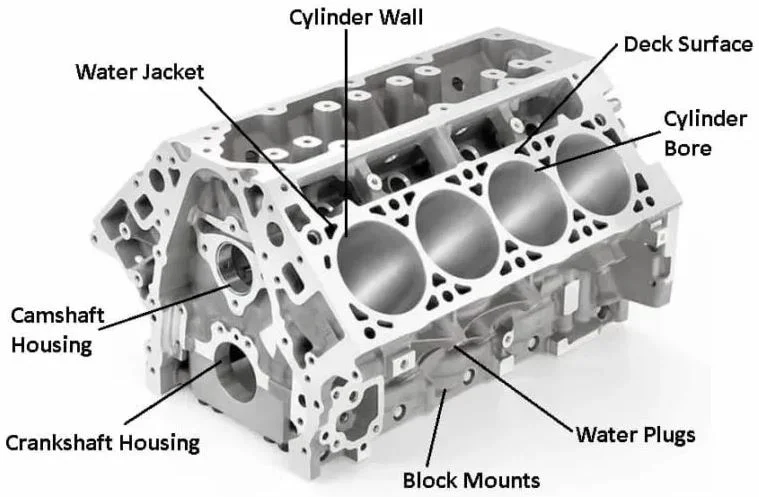
The cylinders are equally distributed in the banks. In other words, the configuration is such that the base of the cylinders intersects. These types of engines can offer loads of capacity in a much smaller amount of space. It is because the complex configuration helps to package the cylinders efficiently.
For example, V6 and V8 engines consist of 6 and 8 cylinders respectively. These cylinders are arranged in such a way that there are 3 and 4 cylinders in a cylinder bank respectively. The two-cylinder banks are fixed at a specified angle to each other. It is generally between 60° to 90°. The angle is termed a V-angle.
This type of engine contains a common crankshaft and the connecting rod of two opposite cylinders are connected to the same crankpin. In comparison to other engine types, V-engines are found to have shorter lengths but at the same time, they have a quite large width.
Another significance is the positioning of the camshaft in V-engines. The camshaft is generally overhead which is termed an overhead cam (single camshaft) or dual overhead cam (double camshaft).
V-type engines help reduce the height, width, and length of the engine considerably. As a result, V-engines are preferred for engines exceeding 3.0-liter capacity. The reduced engine size decreases the bonnet height of the vehicle. This provides better aerodynamics and smoother operation at high speed.
These produce higher torque at low speeds, as compared to other engines. Even though the size benefit cannot be overseen, V-engines offer disadvantages due to the complex structure. The weight distribution is not completely even and maintenance or replacement of parts can be a tedious task.
Another disadvantage of the V engine is that it cannot easily handle an odd number of cylinders. The odd-numbered cylinder can vibrate if the number of cylinders is not balanced.
Examples of V-type engines are V6, V8, V14, and V16. Some of the cars present with the v-type engine are the Mercedes Benz E 400, Toyota Camry, BMW 5 series, 6 series, and 7 series models, and Ferrari 458 special model.
Inline Engine Cylinder:
In this type of engine, the cylinders are arranged in such a way that it is in a series or in a single straight line. It is also known as a straight engine.
Inline engines are preferred for engines having a capacity lower than 3.0 L. These have simple and robust structures which are considerably easier and cheaper to manufacture. It can accommodate 2 to 8 cylinders in a straight line.
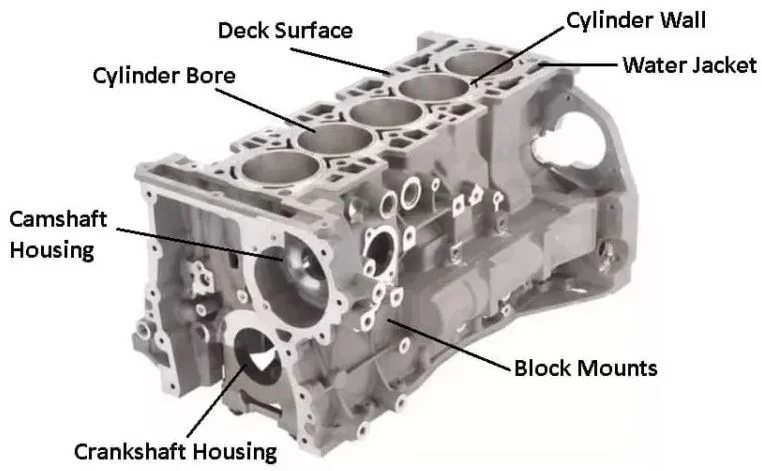
It houses the engine’s camshaft with tappets and pushrod arrangement. The valves are either placed in the cylinder head or the block next to the pistons. The cylinders are aligned in one single row along with the crankshaft.
As compared to other engines, inline engines provide much better balance due to even weight distribution. Inline engines are easy to maintain and repair due to their simple structure.
These can easily handle odd-numbered cylinders since there are single cylinders placed one after the other and there is no room for an uneven number of cylinders.
However, these produce less torque than V-engines at a slow speed. Some of the cars which use inline engines are Kia Seltos, Tata safari, BMW 520d, and Mahindra XUV700.
Boxer Engine or Opposed Engine Cylinder:
The cylinder block in a boxer engine consists of two banks of cylinders. It is like a flat-pressed version of a V-type engine. It is also known as the horizontally opposed engine due to its flat structure.
The cylinder banks are located on either side of the central crankshaft in this engine. It is called a boxer engine due to the motion of the piston being similar to that of a boxer’s fist in the horizontal plane.
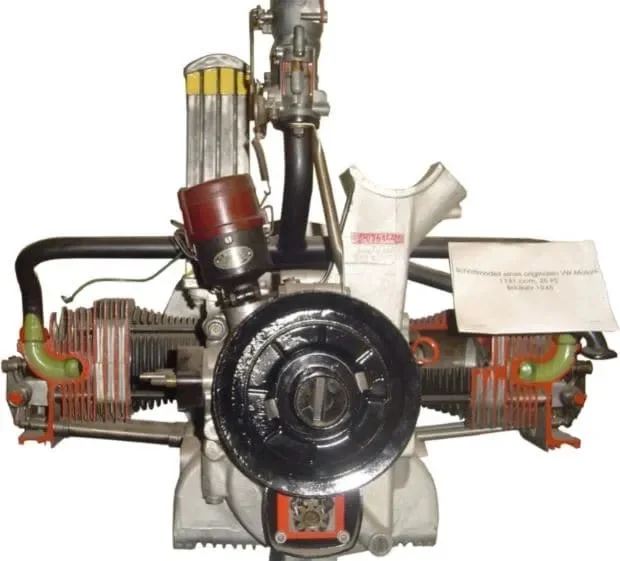
But the only difference is that the pistons (cylinder banks) move in the opposite direction as opposed to the boxer’s fist moving in the same direction. The pistons in the opposite direction move toward and away from the central crankshaft at the same time. The boxer engine is a more complicated engine type as compared to other types.
While the inline and V-type engines are tall and narrow, the boxer engine is more rectangular in structure. It contains more components which increases the cost of manufacturing. The complicated layout of the engine makes it more difficult to access the parts for replacement.
Boxer engines offer a low center of gravity and perfect balance which allows the engine output to flow directly into the transmission without any losses, increasing the efficiency.
The opposite movement of pistons balances the required counterweight on each other. Hence these do not require any counterweight or dampening systems. Boxer engines can provide high continuous torque but require a proper cooling system.
Moreover, these can take up loads of space for a high-capacity engine. Reliable brands such as Subaru and Porsche still use the boxer engines in cars such as Porsche 911, Porsche 718, Subaru Forester, and Subaru Outback.
For More Press Here







